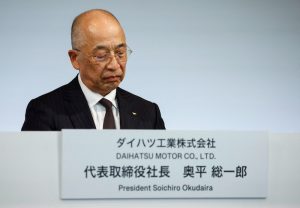Experts at law firms White & Case and Lee & Li share their views on current market options for Taiwanese companies seeking liquidity
S&P Global crowned 2020 “The Year of the SPAC,” and it is hard to disagree with this sentiment. The wave of special purpose acquisition companies (SPACs) has dominated headlines as the SPAC, together with its ensuing business combination, became the preferred way for experienced management teams and sponsors to bring select targets to market. This SPAC flood has predominantly taken place in the US, but the frenzy has most recently spurred the likes of Singapore and Hong Kong to introduce their own regimes as well to capitalize on the momentum.
Even though the sheen has come off the SPAC path somewhat in recent months amid increasing regulatory scrutiny and a tightening investor market, this liquidity model is not going anywhere and presents particular opportunities for Taiwanese companies in search of additional exit optionality.
The SPAC/de-SPAC model facilitates both liquidity and capital influx more quickly and with more certainty for the right type of company as compared to other more traditional approaches, such as a conventional IPO or trade sale, which may not be feasible or provide the right type of exit desired by a target. For high-growth tech-focused Taiwanese companies with the right marketing narrative, particularly those operating in burgeoning sectors such as battery development or semi-conductor production, a de-SPAC may just be the right type of exit.
The rise of SPACs and de-SPACs
The SPAC is not a novel product, having first appeared in the 1980s. And, while there have been upticks and periodic waves in the past, 2019 was a true milestone in SPAC history, spurred by a constellation of factors including the pandemic, the search for alternative liquidity models, incredible levels of dry powder and a rising number of high-growth tech companies.
According to SPACInsider, 646 SPACs launched between January 2020 and July 2021—nearly three times more than the total number of SPACs launched during the previous ten-year period. The shift to SPAC capital-raising was so pronounced that US-listed SPACs overtook traditional IPOs in terms of market share, accounting for 59 percent of all US IPOs in the first half of 2021.
However, increasing scrutiny on de-SPACs in early 2021, and a host of other factors have largely stymied the astronomical ascendance of SPAC and de-SPAC activity. Even with a curbing of new SPAC IPOs, though, as of July 31, 2021, there were still well over 400 SPACs, representing more than US$120 billion in SPAC “dry powder” searching for suitable targets.
With the sheer volume of US-based SPAC activity, the US market has become extremely crowded. As a result, sponsors have naturally looked toward other hotbeds for emerging and high-growth enterprises, including APAC, as a source for both differentiating their investment thesis and sourcing viable targets. More than 30 percent of all SPACs launched during January 2020 to July 2021 were APAC-focused or had APAC-based sponsors.
The shift in focus also bodes well for APAC-based targets, who are now more keenly attuned to the alternative exit option, especially as Singapore and Hong Kong are soon expected to enter (or have already entered) the SPAC mix. There have been at least 20 APAC-based targets in de-SPACs pending or completed in 2021, including Altimeter Growth Corp/Grab Holdings valued at more than US$31.1 billion and Richard Li’s Bridgetown 2/Property Guru valued at more than US$1.7 billion.
The trend has not gone unnoticed in Taiwan. Notably, regulators in Taiwan engaged the Taiwan Stock Exchange (TWSE) earlier this year to conduct a feasibility study on whether to introduce a SPAC regime in Taiwan. Considering that the TWSE listing rules would need to be significantly overhauled to accommodate such a regime, and that the current IPO timeline in Taiwan is already considerably faster than in other venues (with listings achievable in under six months), it was concluded that there was no immediate need to bring SPACs to Taiwan.
This, however, certainly has not prevented Taiwanese sponsors from launching SPACs in other jurisdictions. For example, Jade Mountain Acquisition, a SPAC led by Moses Chen, CEO of Taipei-based investment firm Maxpro Ventures, filed for a US$100 million offering in July this year and plans to target the healthcare and technology sectors.
Conversely, Taiwanese regulators have generally been neutral and open toward bringing Taiwanese companies to SPACs overseas. At least three Taiwan-based companies, including Advanced Lithium Electrochemistry and ProLogium Technology, have publicly disclosed consideration of de-SPAC options as well. Both are in the battery industry.
However, the sudden emergence of APAC-focused SPAC apital is only one piece of a larger puzzle. Private equity capital that has accumulated over the last few years and continues to accumulate, has yet to be, to a large extent, deployed. According to Preqin, APAC-focused dry powder hit a record-high of US$446 billion in April 2021, and this number continues to grow.
While pandemic effects on deal-making still linger and the regulatory landscape in Greater China and around the world remains dynamic, is a de-SPAC the right exit for an APAC (and particularly a Taiwanese) company looking for liquidity, and how does this compare to other options on the table?
Liquidity options
Following the uncertainty of 2019 and 2020’s dynamic, non-traditional deal-making, 2021 debuted with COVID-19 vaccines rolled out and people worldwide yearning for normalcy. Markets moved toward pockets of opportunity (including SPACs) as the world emerged from pandemic mode and returned to business in a new normal.
Indeed, in the first half of 2021, inbound and outbound APAC M&A activity reached sturdy levels of more than US$500 billion each.
While the market still exhibits some signs of the anomaly, with corporate carve-outs, restructurings and other alternative or special situations investments continuing, traditional deal-making certainly remains a plausible pathway to liquidity for would-be sellers. Sponsor-led auctions and LBOs have returned to APAC and are being met with avid interest from buyers, for the right targets in the right industry.
Taiwan in particular has significant potential as a buyout target market, provided that would-be buyers of domestic targets are confident they can obtain Investment Commission (IC) approval.
Although the IC has become less hostile toward private equity transactions in recent years, it continues to impose regulatory as well as practical restraints on investments by Mainland Chinese investors and cross-border mergers.
From a seller’s perspective, a sale of all or most of the business could represent a significantly rewarding liquidity event in this market, but one would need to consider whether generationally the business is ready for that change, recognizing Taiwan as home to many longstanding, family-owned and operated businesses.
Meanwhile, traditional IPOs also remain a stalwart among paths to liquidity for sellers who want to remain in the business. However, increasing regulatory scrutiny, ever-evolving geopolitics and tensions have inserted heightened levels of caution over Asia-Pacific–based companies looking to US capital markets. This has resulted in a number of companies turning toward domestic IPOs (in Mainland China or Hong Kong for Chinese businesses, for example).
In Taiwan, public listings on the TWSE or Taipei Exchange (TPEx) are still a viable route to liquidity, but regulators are enhancing their scrutiny over foreign issuers as well. In contrast, the de-SPAC, as traditionally formulated, allows for certain procedural and other advantages to a company seeking to fast-track its listing, without needing to strictly conform to the listing criteria imposed by TWSE or TPEx in terms of financial performances and capabilities over a historical period.
In addition, to date, Taiwanese regulations have remained silent on whether asset deals or business combinations between a domestic company and a foreign company would be subject to IC approval (noting that any transfer or license of intellectual property to a Mainland Chinese business would be governed by a separate set of rules and still require IC approval). There is fodder here for creative restructuring without additional scrutiny through de-SPAC deals.
While the use of projections in a US de-SPAC has been called into question, the unveiling of SPAC regimes in Hong Kong and Singapore sets the stage for some vibrant venue competition. No matter the venue, though, the recent SPAC craze has settled investors enough to make clear that a de-SPAC is not some silver bullet for any pre-IPO tech company with capital needs. Issuers must still be public company-ready to succeed. Targets should be cognizant of what it means to become publicly listed and what it will take to get there—roadshows, listing compliance and all. So, while SPACs may represent an attractive alternative to a traditional IPO for a Taiwanese (or any) company, the question will be whether the company is right for that option.
Determining what is “right” for a would-be seller or target is not simplified by the plethora of options continuing to grow, amid a shifting and dynamic regulatory and geopolitical landscape. So what is the way forward?
Parallel and “triple tracking”
Companies are adopting a more nuanced approach when developing a liquidity and exit strategy, under advice from experienced financial and legal advisers. Rather than committing to one liquidity option, the market is ripe for pursuing two or three paths concurrently.
With so much supply of dry powder in different forms, sellers continue to command leverage generally, and most buyers seem willing to tolerate an elaborate beauty parade. A dual-track or triple-track strategy will help ensure that a company has other viable options should an IPO suddenly become no longer feasible due to changing market conditions or other factors beyond the company’s control. What will work in practice, however, including the number of tracks, for any particular company depends on how ready it is for each of these alternatives.
Implementation of a carefully orchestrated exit plan with concurrent tracks is also no simple feat. Practically, while some work streams (for example, financial readiness for an IPO or a trade sale) can take advantage of certain economies of scale and be conserved, others (for example, soliciting bidders and timing regulatory filings) cannot and would, in some cases, be mutually exclusive due to loss of competitive tension in any process.
There is no universal triple-track plan for any given company, but it is helpful to think about this beauty parade, however tailored, more as an extended valuation discovery mechanism.
Final thoughts
While the market for de-SPACs has cooled this year, the fundamentals that make it an attractive option for APAC companies remain—liquidity, speed, certainty and price discovery, and the introduction of Hong Kong and Singapore SPAC regimes will certainly fan the flame.
SPACs will remain an intriguing alternative to traditional exit and liquidity options, which will undoubtedly persist as well. The message for many companies and sellers is resoundingly optimistic too—additional access to capital and liquidity, but with the increased power of choice, attaches the responsibility to be strategic in exercising that power in order to ensure the optimal outcome.
- Steven Sha and Daniel Yeh, partners, White & Case; Benjamin Y. Li and Derrick Yang, partner and associate partner, Lee and Li.
Any views expressed in this publication are strictly those of the authors and should not be attributed in any way to White & Case LLP.
*The views expressed on Industry Announcements are not necessarily the views of
Asia Financial.
*To contribute press releases, research or commentaries, please send an email to
[email protected]
























